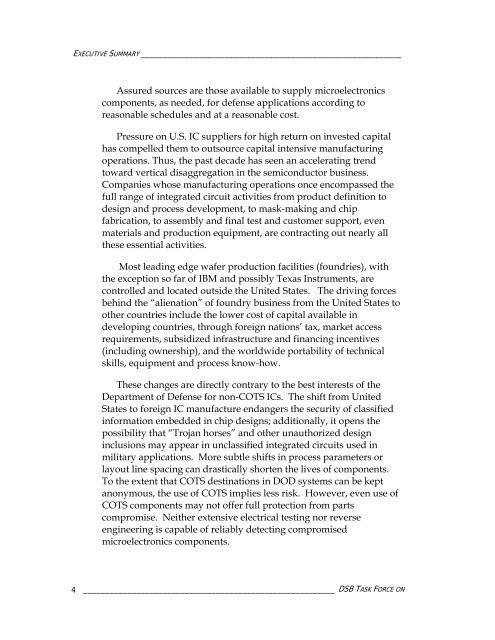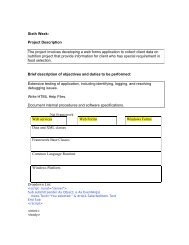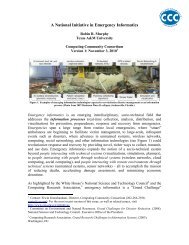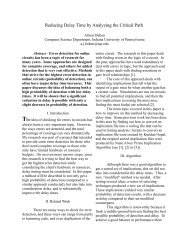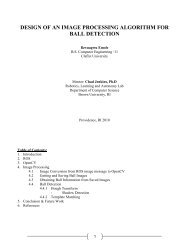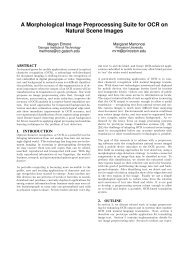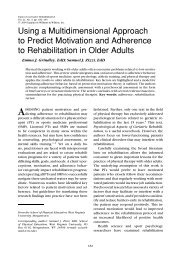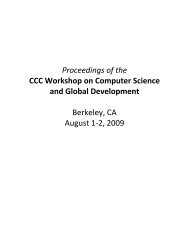High Performance Microchip Supply - Under Secretary of Defense ...
High Performance Microchip Supply - Under Secretary of Defense ...
High Performance Microchip Supply - Under Secretary of Defense ...
Create successful ePaper yourself
Turn your PDF publications into a flip-book with our unique Google optimized e-Paper software.
EXECUTIVE SUMMARY ___________________________________________________________<br />
4<br />
Assured sources are those available to supply microelectronics<br />
components, as needed, for defense applications according to<br />
reasonable schedules and at a reasonable cost.<br />
Pressure on U.S. IC suppliers for high return on invested capital<br />
has compelled them to outsource capital intensive manufacturing<br />
operations. Thus, the past decade has seen an accelerating trend<br />
toward vertical disaggregation in the semiconductor business.<br />
Companies whose manufacturing operations once encompassed the<br />
full range <strong>of</strong> integrated circuit activities from product definition to<br />
design and process development, to mask-making and chip<br />
fabrication, to assembly and final test and customer support, even<br />
materials and production equipment, are contracting out nearly all<br />
these essential activities.<br />
Most leading edge wafer production facilities (foundries), with<br />
the exception so far <strong>of</strong> IBM and possibly Texas Instruments, are<br />
controlled and located outside the United States. The driving forces<br />
behind the “alienation” <strong>of</strong> foundry business from the United States to<br />
other countries include the lower cost <strong>of</strong> capital available in<br />
developing countries, through foreign nations’ tax, market access<br />
requirements, subsidized infrastructure and financing incentives<br />
(including ownership), and the worldwide portability <strong>of</strong> technical<br />
skills, equipment and process know-how.<br />
These changes are directly contrary to the best interests <strong>of</strong> the<br />
Department <strong>of</strong> <strong>Defense</strong> for non-COTS ICs. The shift from United<br />
States to foreign IC manufacture endangers the security <strong>of</strong> classified<br />
information embedded in chip designs; additionally, it opens the<br />
possibility that “Trojan horses” and other unauthorized design<br />
inclusions may appear in unclassified integrated circuits used in<br />
military applications. More subtle shifts in process parameters or<br />
layout line spacing can drastically shorten the lives <strong>of</strong> components.<br />
To the extent that COTS destinations in DOD systems can be kept<br />
anonymous, the use <strong>of</strong> COTS implies less risk. However, even use <strong>of</strong><br />
COTS components may not <strong>of</strong>fer full protection from parts<br />
compromise. Neither extensive electrical testing nor reverse<br />
engineering is capable <strong>of</strong> reliably detecting compromised<br />
microelectronics components.<br />
_________________________________________________________ DSB TASK FORCE ON


